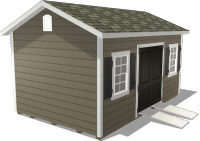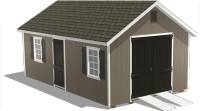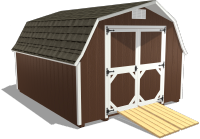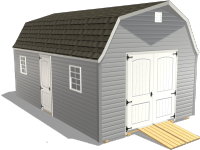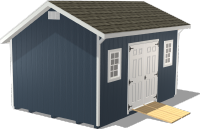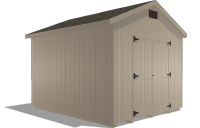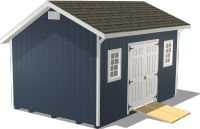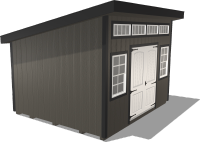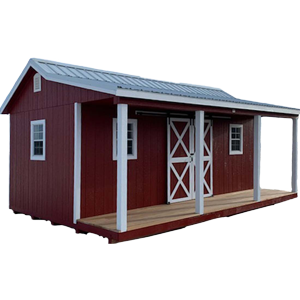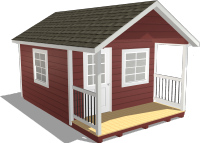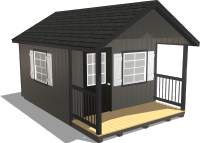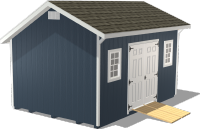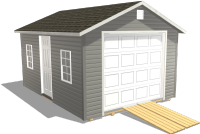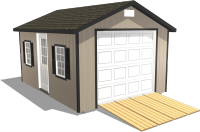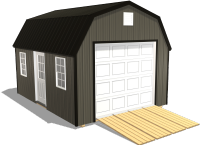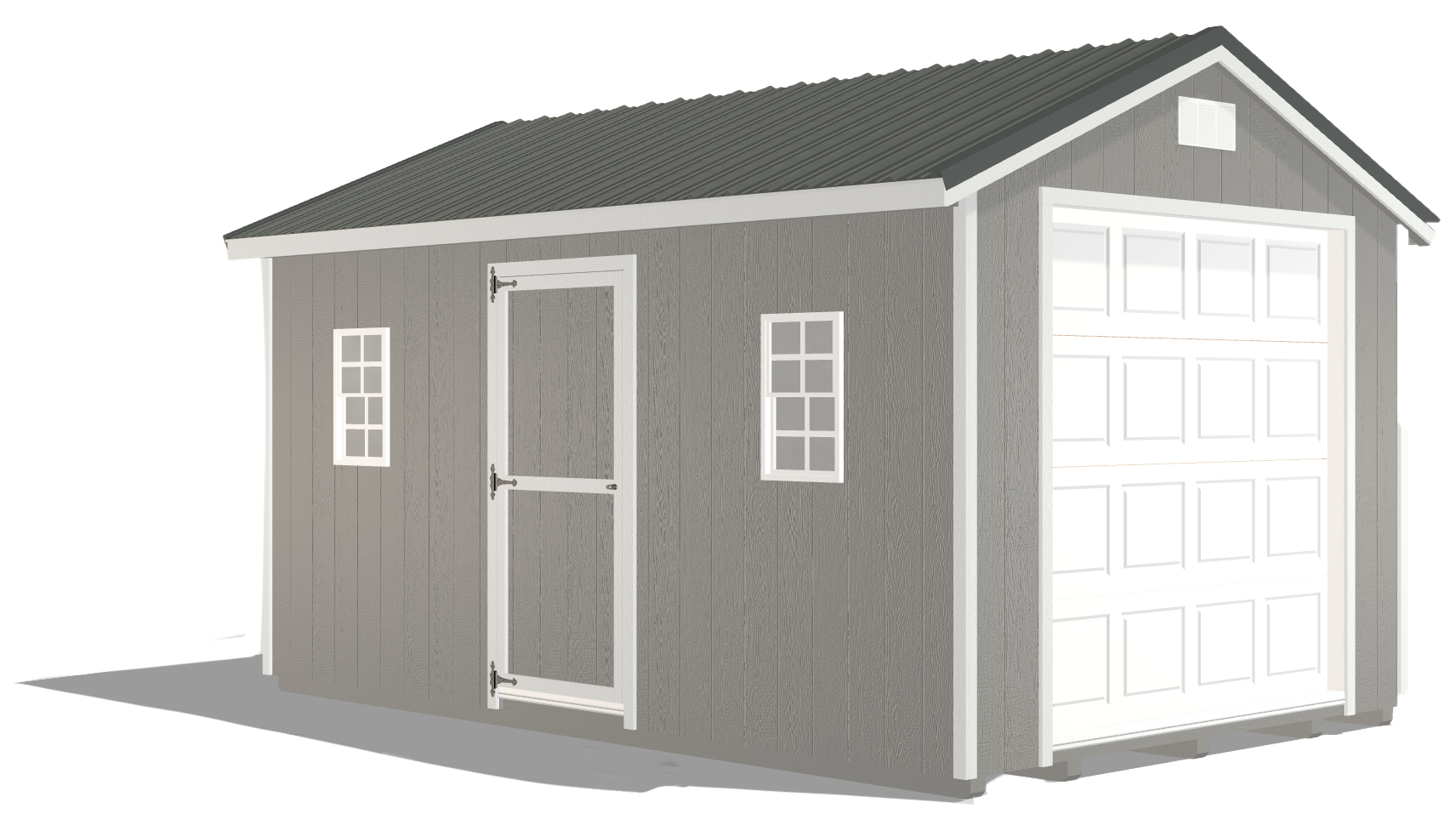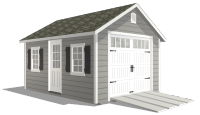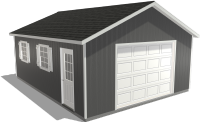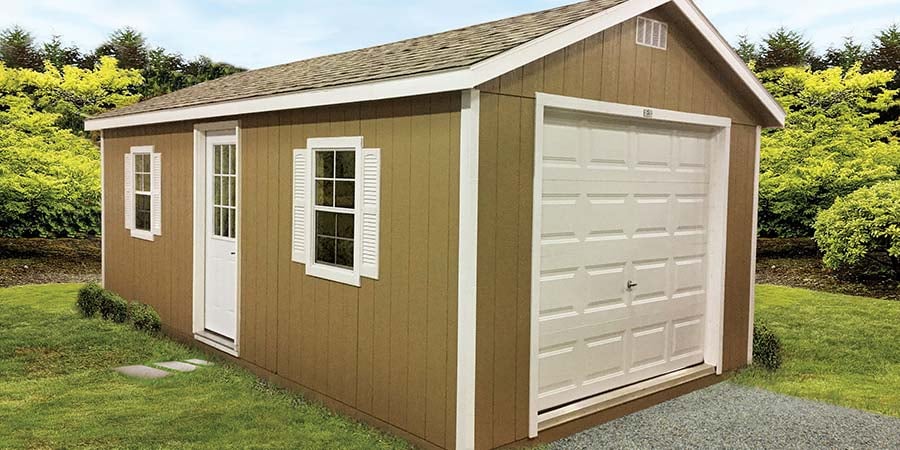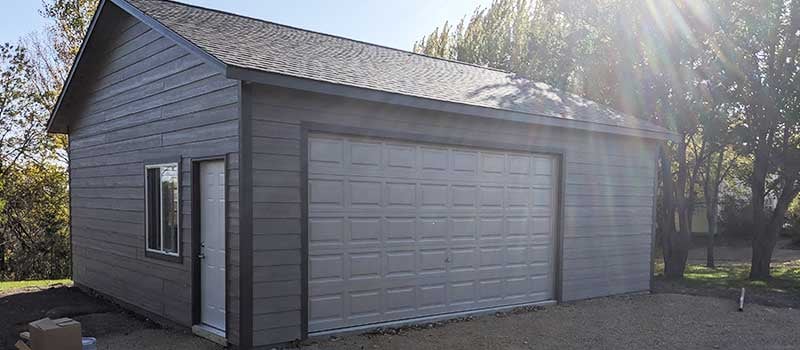How to Know a Garage Will Meet Your Storage Needs
by Dakota Storage Buildings, on July 29, 2021
Could a garage solve your storage problem? Asking the right questions will bring clarity.
If you need more storage, and you think a garage could be a solution, but you’re not sure if it’s the right one, considering the four factors outlined in this article should help you decide.
1. Size
Knowing how you’ll use your garage and what you plan to store inside of it will point you in the right direction regarding the size. And when thinking about size, be sure to factor maneuverability and height into your estimate. The average garage ceiling height is 8’, and the standard measurement for a single-vehicle overhead garage door is 8’x7’ while a double-vehicle door is 16’x7’.
Keep in mind, the size you choose will affect the price. The larger it is, the more it will cost, even if you select the least expensive siding or roofing material.
Here are a few size estimates that might help you decide which is best for your needs.
- One-vehicle Garage. The smallest size you should even consider for a one-car garage is 12’x20’. However, this only accommodates a small or midsize car and offers very little maneuverability. A 16’x28’ garage provides more space for opening car doors, entering and exiting vehicles, and has the flexibility to house a larger vehicle.
- Two-vehicle Garage. Typically, two-car garages are 18’x20’. This is just enough to fit two small or midsize cars in your garage. However, there are several other standard sizes, including 20’x20’, 22’x22’, and 20’x22’. Some of these sizes make it easier to open vehicle doors and can accommodate larger vehicles.
- Vehicle Storage + Workspace. A garage size that accommodates two vehicles also works well for those who’d prefer to park a vehicle on one side of the garage and use the other side for workspace, including room for a workbench and maneuverability. This size can also accommodate one vehicle and a motorcycle, ATV, or snowmobile in place of a work area.
- Workshop Garage. If the garage will be used primarily for a hobby like woodworking, having ample space to segment for lumber storage, dust collection/compression, and finishing is ideal. If the workshop is for restoring vehicles or a less space-consuming hobby, a smaller garage will do.
2. Flooring
Knowing how you want to use your garage and what you will store inside may dictate the type of flooring you need. Here are three examples of flooring types and use-case scenarios.
- Built-in Flooring. Some garages come with flooring already installed. These garages often utilize treated plywood sub-flooring that’s strong enough to hold the weight of vehicles and capable of repelling water and resisting stains. This flooring works well for garage workshops as well as vehicle (small-to-midsize), ATV, motorcycle, and snowmobile storage.
- Pre-laid Flooring. Pre-laid flooring includes foundations made of cement or stone pavers that are laid before on-site construction starts. In and of themselves, they are the most sturdy option but may not be naturally resistant to stains. This flooring works well for garage workshops as well as vehicle (mid-to-large size), ATV, motorcycle, and snowmobile storage.
- Floor Coverings. Whether you prefer a built-in or pre-laid garage floor, you can cover both with floor paint/stain, epoxy coating, or interlocking floor tiles. These options improve aesthetics and longevity. A floor like this can make a traditional garage look more like a showroom.
3. Overhead Doors
If you plan to store anything that would benefit from having an overhead door (vehicles, lawn mowers, bikes, kayaks, etc.), you can guarantee you’ll get what you need with a garage. However, not all garage doors are not created equally. For this reason, security features, manufacturing quality, and motor type can impact its ease of use.
Here are a few other things to consider.
- People who want visual appeal often opt for wood. However, wood will require the most maintenance.
- Steel is the most common and least expensive of the materials.
- Fiberglass is durable, but this material is prone to cracks when exposed to freezing climates.
- Aluminum resists corrosion and rust and will work well in a region where moisture is an issue.
- Vinyl is a relatively new garage door material. It is durable and offers low maintenance.
- Those storing antique cars and other high-value items may want to consider a door with the highest security rating.
In addition to the overhead garage door, every garage should also have an entry door or another way to access the garage without opening the overhead door. Ideally, entry doors are prehung and insulated.
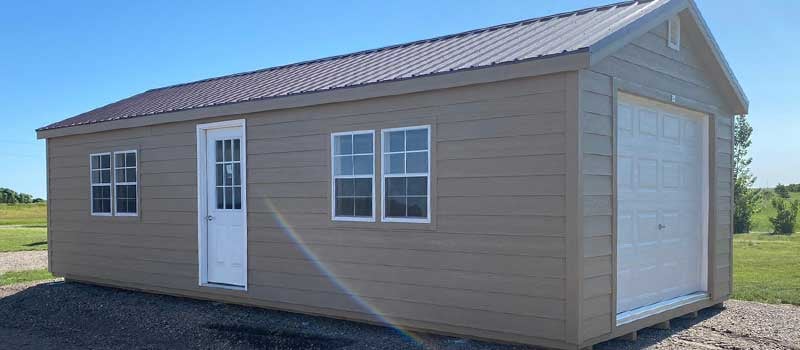
4. Cost
According to HomeAdvisor.com, building a garage averages $50 per square foot. According to them, a one-car garage ranges from $10,500 to $27,000 and a two-car garage between $14,500 and $40,300. HomeGuide.com says the national average to build a garage is $35 to $60 per square foot. This means the cost to build a one-car garage is between $7,500 and $14,200, and a two-car garage is between $19,600 and $28,200.
As you can see, both reputable sources give slightly different price ranges. This is due to various factors, including geographical location, commodity prices, and labor costs.
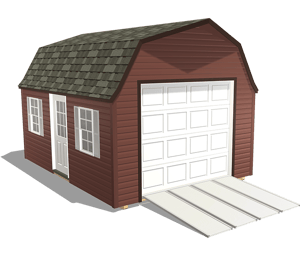
Why guesstimate a price or risk going over budget? At Dakota Storage Buildings, we offer a way to customize a garage and get an estimated price immediately — the best way to stay on budget!
As you think about your budget and the cost of the garage itself, be sure to set aside money for a concrete pad and electricity.
You can get estimates for a concrete foundation using sites like Angie's List or, if you're handy, you can pour your own. Some garage builders offer site preparation at an additional cost. Remember, the cost of your foundation will be contingent upon the size of your garage.
If you want electricity in your detached garage for outlets and lighting, you'll need to think about running power. Costs for adding circuits to a detached garage range from $1,000 to $4,000 because the feeder cable must be buried beneath ground running, connecting from the main service panel to the garage. You can do this yourself to save money or hire an electrician or handyman to handle the project.
If You Decide That a Garage Is Right For Your Storage Needs
If, after working through the factors outlined in this article, you're convinced that a garage would sufficiently meet your storage needs long-term and be a good investment, then it's time to start researching options.
We created a guide that helps make this process easier and less overwhelming. It walks through all the options and important details that are involved in garage shopping.
Our guide includes:
- Garage size diagram
- Garage placement tips
- Roofing, siding, and flooring advice
- Popular garage features
- Common purchasing options
- How to lay a foundation
Because buying a garage is a big purchase, you shouldn't rush into it. Instead, take your time researching garage types, garage builders, and price ranges to find the BEST option for your needs, space, and budget. If you have any questions, we'll be happy to offer expert advice.
More helpful storage and garage-related articles.
About Dakota Storage Buildings
Life is demanding and full of choices. We’d love to make just one aspect of your life a little easier. That’s why it’s our mission to provide storage solutions you can trust, from sheds and garages to coops and kennels. Customize your storage building with our online 3-D configurator, explore our stock buildings, or find a display location near you. Our team is now serving North Dakota, South Dakota, Minnesota, western Wisconsin, northeast Nebraska, and north-central Iowa. Discover The Dakota Difference.



